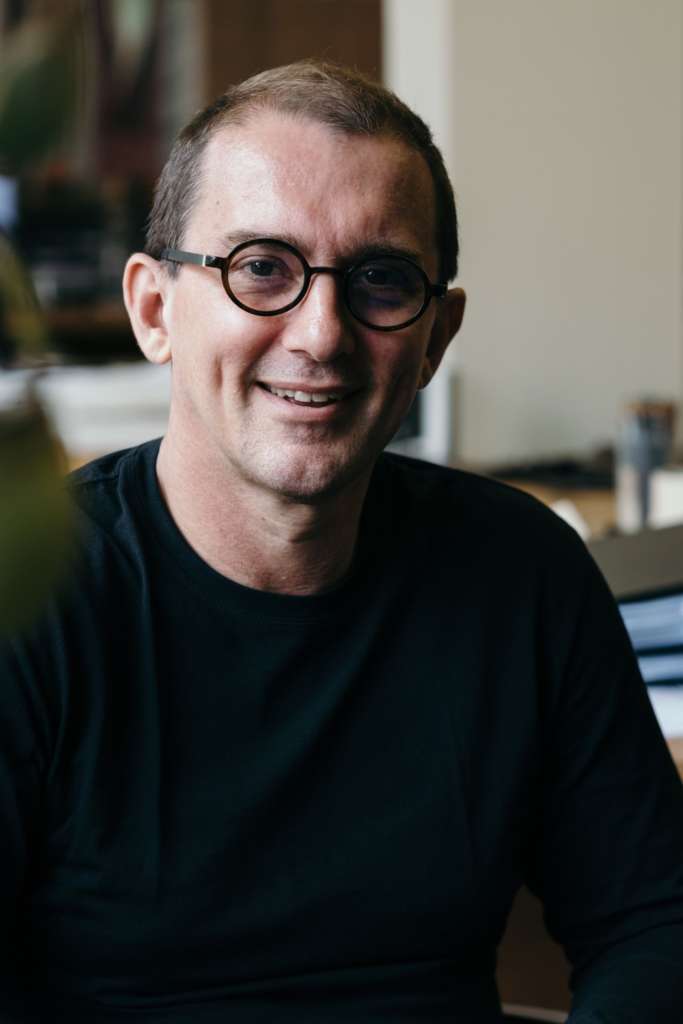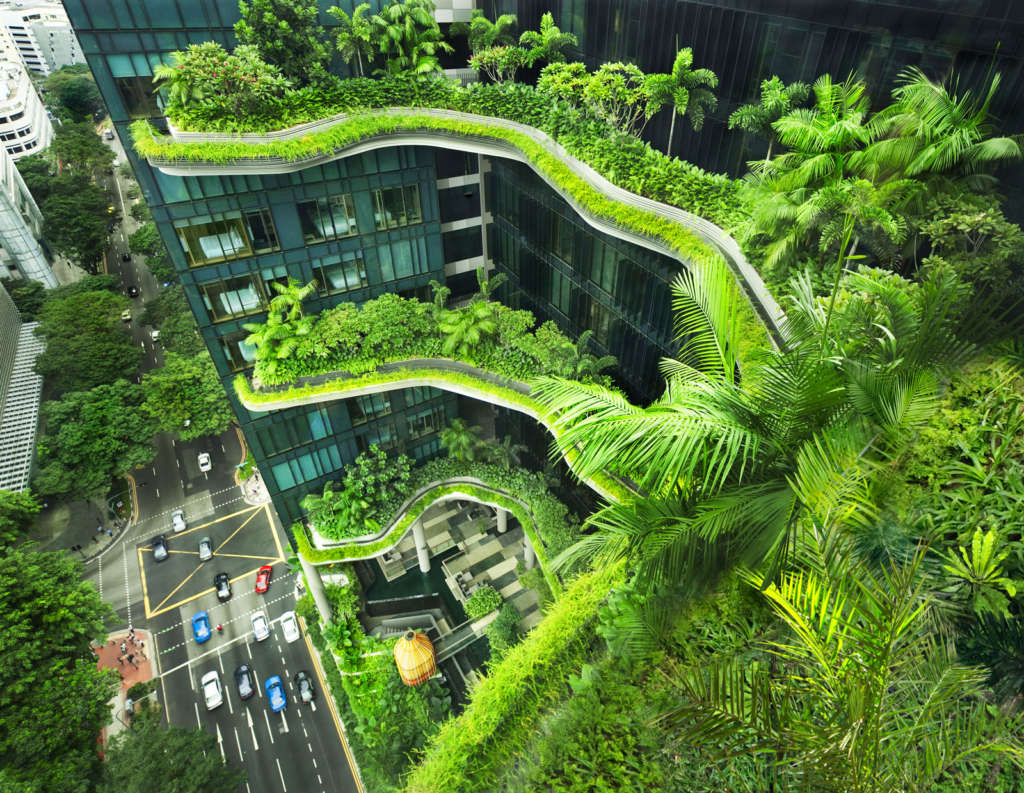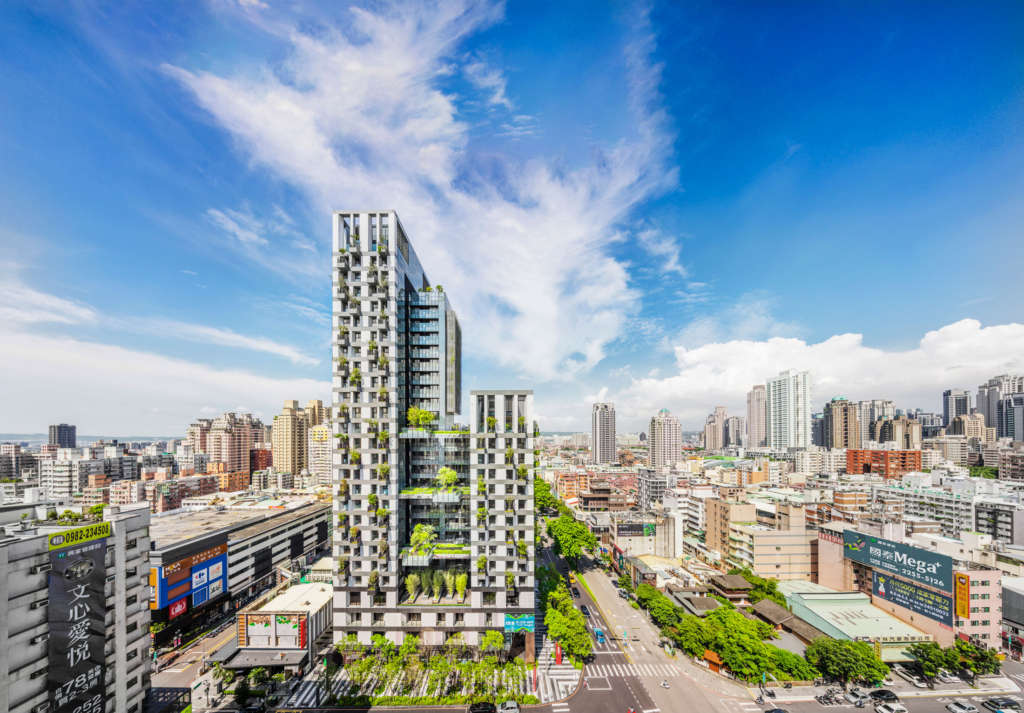
Imagine a city for just a short second: the weather is warm, the sun sparkles off the water and skyscrapers full of lush vegetation are as far as the eye can see. As architects, designers and even movie-goers, we’ve all thought of this place from one time or another, but you’d be surprised to learn that it already exists. In fact, if it weren’t for a global pandemic and a less than desirable time for travel, you may just find yourself in the small city-state of Singapore. While more recently it’s become famous for the starchitecture that dominates its skyline, there is one firm that has become synonymous with the country and stands as a reflection of the greater goals of its society: one that strives to transform itself into a positive living environment for all who live within and around it.
Established by Wong Mun Summ and Richard Hassell in 1994, WOHA Architects have been incorporating sustainable design strategies into all of their buildings across southeast Asia, China, and Australia. When I visited there last December, it was hard to walk any great distance without coming across one of their impressive buildings – its easy to see why they’ve become such a leading voice in sustainable design around the world.
Below is my Q&A with founding director of WOHA, Richard Hassell, who shares his thoughts on sustainability, building in a post-COVID world, and the future of their practice. Thanks for reading and we hope you enjoy it.
Q&A
WOHA’s work is internationally recognized for its incorporation of sustainable design strategies and approach to climate change, most easily recognized by natural vegetation as a building element. What does sustainable design mean to you and describe your design process.
Ultimately, we see being sustainable as being self-sufficient in food, energy, and water. In many ways this relates to climate change, but climate change is something that requires actions from billions of people. With our projects, we create prototypes that we think offer solutions to some of the big issues we are facing right now. For example, when we integrate landscaping into our projects, it is not just for aesthetic reasons. Yes, it’s beautiful but we also want it to be easy to maintain, affordable and functional. We can re-introduce nature and biodiversity into our dense, built-up cities, with projects like the Oasia Hotel Downtown or Kampung Admiralty. Actually, there are studies that show that planting trees is the single most powerful and affordable tool to combat our climate crisis. It focuses on land that is not urbanised or used for farming, but we think that planting in cities can have a huge impact if it is done on a large scale.

Oasia Downtown. Photo by Patrick Bingham-Hall 
Oasia Downtown. Photo by Patrick Bingham-Hall
We try to see how our projects can do good by adding something positive to the environment, the community, and the city as a whole – so that the site is better with our building on it than if it were left empty. This means that we add to the biodiversity, we have a high green-plot-ratio with diverse planting, and we contribute to peoples’ wellbeing as well as add services that contribute to the livability of the city.
Being consistent and authentic in what we do is very important to us. We try to choose projects that we can really add value to with our research work and design strategies. Oftentimes we will already have ideas and a concept before we officially take on a project – the first design decision we make is whether or not we take the project on or not. If we find that we cannot really implement anything that is unique to WOHA, for instance apply our strategies for challenges like high density, creating public space in large building, and connectivity, then we won’t accept the commission.
We think about how the aims of the developer could be enhanced and made more valuable by the things we bring in, like social ideas, community ideas, ideas that integrate systems like water systems, landscape systems, eco-systems, throughout the project. What we are looking for are the strategies that give the client not only what they want but also makes them a leader in sustainable design. This gives the client a positive attitude towards the project because they are doing something good for the city. The challenge at the beginning of the project is finding a special diagram where everybody wins: the client, the community and the environment.
This also means that when we take on a project, we take agency to expand the brief beyond what the clients ask for – to show how the project can do more, be more and contribute to its location and context. The form usually comes out of this exercise of redefining the brief, it’s not just about solving a design problem. I think in the beginning people mainly commented on the form of our projects and not so much on the key strategies that make the design sustainable, which is also why we wrote our book “Garden City Mega City” – to explain our design thinking and approach.
Considering all that has happened in 2020, how has the pandemic influenced WOHA’s thinking within the built environment? Has it re-shaped or re-enforced your practice’s beliefs?
I think it’s hard to tell at this point how far-reaching the COVID-19 impact will be. It has definitely introduced a long-overdue questioning of the status quo, and some of those questions will be about the environment and climate change. There are many conversations that are going on in our industry and some of them are conflicting.
For example, some may think that the answer to avoiding future pandemics is low-density, but we think that high-density is not the problem, it’s more the quality of high-density environments and how they are managed. You can see massive COVID-19 infection rates in rural areas but then cities like Hong Kong and Taipei, which are very densely built-up, have been able to successfully avoid a massive outbreak of the virus.

Parkroyal. Photo by Patrick Bingham-Hall 
Parkroyal. Photo by Patrick Bingham-Hall

So this pandemic has re-enforced our strategies of having natural ventilation in private and communal spaces, having flexible interiors that can be adjusted according to changing needs, integrating nature and plenty of outdoor space into our buildings – making sure that high-density is coupled with high-amenity.
How can WOHA’s design pedagogy be applied in other parts of the world where climate or social environments are much different?
We don’t try to export our “Singapore model” 1:1. It’s not really that difficult to translate our design thinking to other parts of the world. We have a few projects in Taiwan, we work in China and we have projects in Australia. We’ve also done a scheme for a project in Germany that shows that the strategies can be adapted to suit different climates and cultural contexts. The key ideas around community, urbanism and environmental and social sustainability can be applied outside of our region.
As an example, our latest completed project, Sky Green, which is a mixed-use residential development in Taichung, Taiwan, breaks away from the existing building fabric of the city. The architectural strategies are an adaptation of our Singaporean, tropical model to a subtropical, seismically active location, which shows that the model is appealing and adaptable to a substantial portion of the globe.


Sky Green. Photo by Kuomin Lee 
Sky Green. Photo by Kuomin Lee
The building is a prototype that represents the city’s aspirations towards fostering sustainable sociable living in a high-density urban environment. It was used as a project reference during the conceptualisation of a new local city planning regulation, launched in March 2019, that incentivises the incorporation of skygardens and lush greenery in highrise developments. It’s the first high-density development in Taichung that also provides high amenity with its generous recreation facilities and ample integrated green spaces – and it’s proven to be successful, and has become the new benchmark. Now there are many new projects in the city that are closely modelled on the Sky Green typology.
This is a very encouraging development, because the positive climatic and biodiversity impact of this approach can really only be realized to its full extent when it is applied across the city.
WOHA has designed residential towers, hotels, public housing, transportation hubs, and institutional buildings. What’s next for WOHA and what can we look forward to seeing in the future?
We’ve got a few things we’re working on here in Singapore: an elevated park connector, a major public building in Marina Bay and an exciting hotel on Orchard Road – and we’re also working on some new projects abroad. We’re looking forward to sharing more details on these projects in the future.
You’re also an accomplished artist with works in entirely different mediums to architecture. How has your passion for art guided your career as an architect?
I actually started out studying art at university, but I thought it was quite lonely. You work alone and it’s introspective. It suddenly didn’t appeal to me because I would rather do something more collaborative. – that’s when I switched to studying architecture which was a way to pursue my other interests in math and science. I never stopped working on my art, but without pressure of it as a career I can do it for the sheer pleasure. My tessellation art combines my interests in textiles, nature, and math.

Indigo Textile for Watanabe’s for The Master Series by State Creative 
Facade screen at the Intercontinental Sanya Resort
Some of my studies into complex tiling and tessellations find their way into our architectural projects, for example the façade of the Crowne Plaza Changi Airport, the Intercontinental Sanya Resort or a big commercial development in Guangzhou.
Architects are always dealing with this relationship between the part and the whole, trying to find the most efficient yet not-boring way of using repetitive units like facade panels, floor tiles and, on a larger scale, apartment units. With tiling, I get the ease of manufacturing – since there are only two, three pieces – but the intelligence is in the system of putting them together in an interesting way.
ÅVONTUURA is an architecture and travel blog so we have to ask “the question”; Now that we’re all at home dreaming of travelling abroad, what’s your favourite city in the world to visit? Do you have any food recommendations or places to see?
That’s a difficult question. Usually when we travel, it’s for work. And I actually really treasure the time I can spend at home here in Singapore. But that being said, I always love visiting Japan. The history, culture, art, food – I love the energy you get from places like Tokyo, but also the peace you feel when you go on a forest walk.
Thank you for your time Richard, we’re all looking forward to what the future holds for WOHA.
For more information on Richard’s art, visit his website at richardhassell.net.
You can also follow him on Instagram @richardhassellart












